Graham Reid | | 7 min read
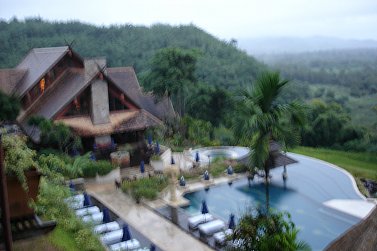
Pale fingers of mist weave through the tree tops of the jungle. At just past dawn it is almost silent, only the faint call of birds and the distant putter of a long-tail boat on the Mekong River beyond the hill.
I step onto the terrace of my hotel room into the balmy air. Already you can feel that the rains will come later today. I sniff in the humidity and gaze across at Myanmar no more than a kilometre away. Laos is on the other side of the muddy Mekong.
This is the famed Golden Triangle, once the land of opium and warlords, and I am up early because I have to go and choose my girl for the day.
I walk down the path between glistening flowers and wave at the few staff of this luxury hotel, the Anantara Resort and Spa, who are up sweeping paths and taking food to the kitchens. In the lobby I meet the manager, Raymond from Switzerland, who has one of life’s dream jobs.
Last night we had dinner together in Baan Dahlia, the resort’s Italian restaurant, and Raymond persuaded me over bottles of imported reds from France that I needed to choose my own girl. I agreed, but that was before he told me I’d have to be up at 6am.
Now, over early breakfast on the patio, I am having my doubts but Raymond is laughing and insistent - and promises to drive me down to where the girls are in one of the hotel’s golf carts.
But when we arrive, just minutes away down the winding driveway lined with fragile mimosa and lush ferns, I learn we now have to climb into the hills a short distance. So up the muddy track we go, up into the fingers of mist as heat rises from my chest, up to find my girl for the day.
And there she is, a handsome 47-year old working elephant whose name I immediately forget when she turns and fondles my arm with her stout trunk. Today I am going to learn to ride an elephant.
“Or fail to do so,” I say to Raymond who wanders back to the golf cart with a laugh.
Yesterday I arrived at Anantara Resort and Spa in the late afternoon after an hour’s drive from Chiang Rai airport through the rain-whipped tropical countryside. I stopped at the small town of Chiang Saen, the centre of the ancient Lanna Kingdom, and walked around the impressive Wat Jadeeloung (literally, the big pagoda) where dark moss-covered stones sink back into the damp earth.
A young monk was sweeping the floor of the temple with a broom made of brushwood. I sat on a pile of bricks which had been carved from this soil a thousand years ago and thought about nothing, then headed north-east through rich green fields and mountains draped with pale mist.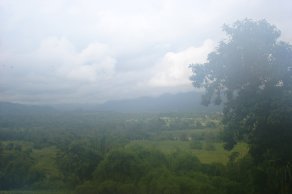
Young and old women swished down the country roads on motorcycles with cheap plastic raincoats pulled over their heads, and men sat cross-legged beneath makeshift roadside shelters smoking. Ancient temples poked out through in the water buffalo fields and warm rain washed the distant hills choked with dense trees.
Later I pulled in at the newly opened Prateep Goldland (“the world’s largest privately owned collection of Buddha images and amulets”) which, from its unglamorous exterior, looks little more than a very large, whitewashed, cement box.
But as I walked among the 2000 Buddha and bodhisattva statues I could feel my body slow in the stillness. In tiny Ban Sop Ruak (“village where rivers met”) near the mighty, if muddy brown, Mekong I bought a cheap pair of ill-fitting trousers to the amusement of the women in the open-air stall.
It was a magical day.
Then I made my way up to my hillside hotel where I sat in silence on a terrace and watched the warm evening rain fall on three countries.
The five-star Anantara with 90 rooms - each with a two-person terrazzo bath, internal features of recycled teak and a private terrace - has drawn me here from just a couple of photographs: one of the gorgeous infinity pool and the other of the elephant camp managed by John Roberts, a qualified mahout who works with Thailand’s Elephant Conservation Centre in Lampang.
Later in the month I am going to see the famous week-long elephant polo tournament in Hua Hin, three hours south of Bangkok, so figure I should at least know something of how difficult it is to ride one of these magnificent animals. And why not do it at a one of the newest additions to the Anantara chain of luxury hotels, whose sister in Hua Hin hosts the polo teams?
So on this morning I have abandoned the indulgence of doing nothing beside the infinity pool to climb atop a massive, but benign, elephant.
Down by the river I wade into the water and wash her, then feed her bananas while the mahout ambles off for breakfast. Standing beside these impressive if curious animals is an unusual experience: their eyes are so knowing that you inevitably start speaking to them and, oddly enough, fully expect a reply.
When my mahout comes back he reminds me of her name - Pang Champen, which means Full Moon - and shows me how to mount the animal, how to grip the back of its neck with my knees, and to steer by digging one knee in behind an ear and shouting some command which sounds much more intelligible to Pang when bellowed by the mahout.
My best efforts go largely unrewarded so we walk in a straight line for quite a while. But finally I get it - or my girl simply humours me, which is more likely - and we wander around the jungle then back up to the front gate of the hotel.
Later in the day I have the opportunity to take her on a lengthy walk but I decline. My fragile sensibilities about large, even friendly, animals are jittery. I have learned what I needed to know.
I go back to my room and the view across the jungle and luxuriate in the swimming pool-sized bath for a while. Then I flick through the activities schedule - mountain biking, cooking school, time in the fitness centre, golf at one of three courses - and decided on nothing so strenuous.
So I kick back for a while on silk sheets, before guilt gets the better of me and I stride down the driveway to the main road.
There, directly opposite, is the imposing and newly opened Hall of Opium which is built through a mountain.
In the notorious but beautiful Golden Triangle, opium was once the major economy and its trade was enforced by powerful warlords like Lo Hsing-han who, in 1972, boasted he was dealing 180 tons a year. Though Laos and Myanmar still have considerable opium fields, Thailand has all but eradicated the growing of opium poppies.
The Hall of Opium is more than a museum of history, images and drug paraphernalia. It provides a literal and metaphoric journey from dark to light: from the long, shadowy entrance tunnel - where spotlights pick out wracked bodies and contorted faces carved into the wall - to the final room which is the Hall of Reflection with wise words from the Talmud, Koran, the Bible, Gandhi and other sources.
In 1988, Thailand's late Princess Mother recognised the opium trade - which had only emerged in the Golden Triangle in the previous half century - had become the cash economy for the various hill tribes who would slash and burn the jungle to plant poppies. Their product would be bought by warlords and their armies for sale around the region.
Her Royal Highness instigated development projects to give the hill people education and alternative sources of income, and encouraged research into the history of the drug. The Hall of Opium offers a video introduction to the history of the trade and its effects on various societies.
Tourism is now the money-spinner in this region. Beautiful resorts and spa retreats like Anantara - which commands 160 acres of native forest and landscaped gardens - bring travellers here to enjoy the splendid isolation, balmy climate and views of three countries where the jungle refuses to acknowledge any borders.
Later I walk back to the small riverside village of Ban Sop Ruak - the women double up again as I waddle past in my ill-fitting pants - and sit in a tiny open-air restaurant. It has one wok and a 40-item menu. I buy a plate of hot spicy beef and a large bottle of Singha beer, and watch local soccer on the flickering television which jumps from colour to black and white for no obvious reason.
The only visible English is a battered Coca-Cola sign being used as a baffle to keep the rain out of a shop on the other side of the muddy park-cum-parking area. The half-hearted neon light slung from the timber beams above fizzes and stutters, a man with a moon-face Buddha countenance and elegant, almond eyes sits opposite me for a meal, the women chatter and play with a baby.
Everyone smiles; then they ignore me.
At dusk I walk back along a path which hugs the riverside. There, further up the Mekong is China. A dog lies asleep in the middle of the road and a truckload of laughing workers returning home swerves around it. The dog doesn’t move. Deep grey clouds gather thick and moody over Laos and all work has stopped on the massive Buddha facing downriver and being built in honour of the Queen.
Then the rains come. It has been a magical day.
That night Raymond and I have dinner on the terrace of Anantara above the pool where I intend to spend most of the following day between breakfast and cocktails hour. And maybe I’ll fit in some quality time in the spa. The rains have come, the mist hangs low. Some other guests join us at our table.
In a gap in the conversation Raymond loudly asks how my girl was.

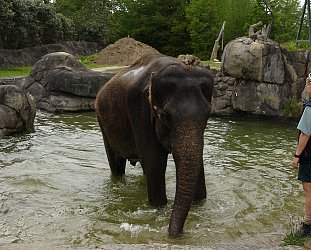
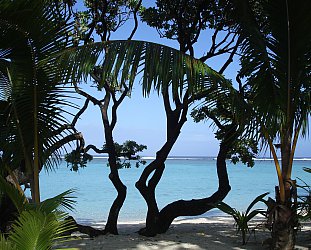
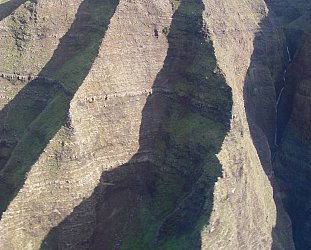
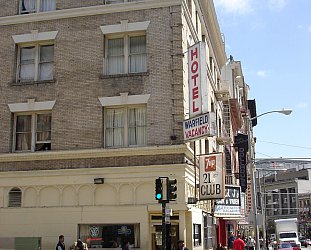

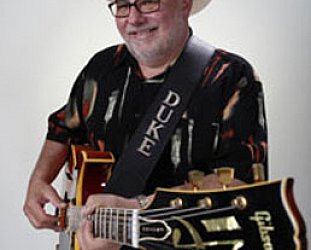
post a comment